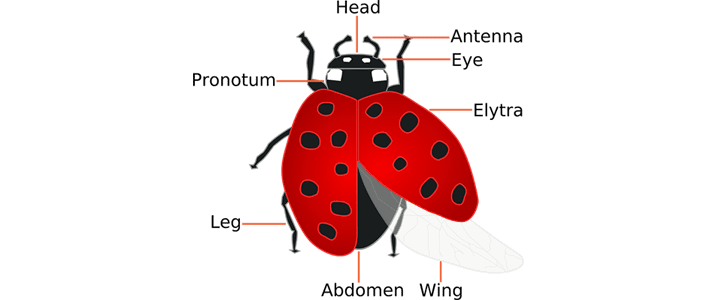Identification and Life Cycle
Ladybugs are insects and are members of the beetle order, Coccinellidae. Other frequently used names are ladybirds or ladybird beetles. There are over 500 species in the United States, and over 4,500 worldwide.
They are small oval shaped insects approximately 1/4 – inch long with six legs. Its head is round with a chewing mouthpart, eyes and antennae. They have a hard shell (elytra), that protects the body and its wings. They are usually bright orange, yellow or red with black spots. Sometimes the ladybug can be a solid color; yellow, brown or black, with no pattern at all.
They have 4 life cycle stages; egg, larva, pupa, and adult. The adult ladybug females lay eggs, usually on leaves or grasses. Depending on the species, she may lay from just a few eggs to 1,000 eggs. The eggs hatch into larvae in about 1 to 2 weeks. They feed for 1 to 2 weeks, molting as they grow, build a cocoon, or pupa, which they they then emerge as adults. It will look soft and pink or very pale for a few hours until its shell becomes hard. As it hardens, it also gains pigment and then the ladybug becomes its characteristic bright red color. They can live up to a year.




Comments are closed.